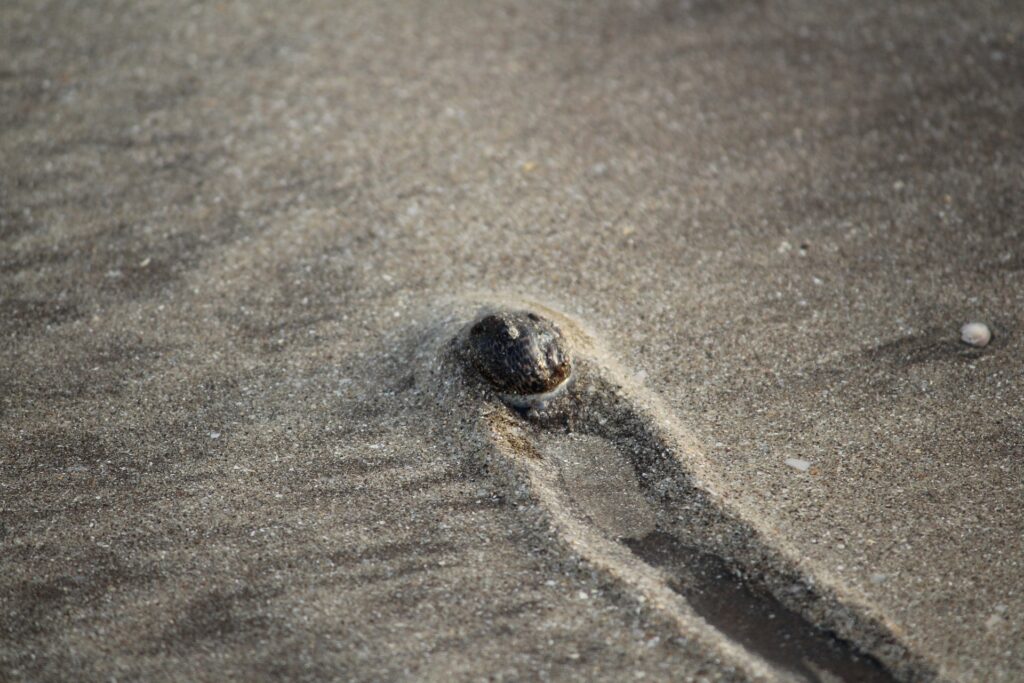Every striped bass angler has their favorite “go-to” lure or bait. That one special secret you pull out when nothing else seems to be working. That one that time and again has let you land fish while your buddies go home empty-handed. A growing number of anglers are making sand fleas their secret and with good reason – they work when nothing else will.
Sand Fleas As Bait?
Sand fleas, also known as sand crabs or sand moles, are small crustaceans that are found on almost every American beach. They are also a favorite meal for a wide variety of species that prowl the surf in search of a meal, including striped bass. Although they are not the most commonly used bait among striped bass anglers, they are very popular with Florida anglers targeting pompano. Northern anglers who saw this technique, or even tried when visiting the area, brought it home and adopted it for striped bass.
Sand fleas may not be a traditional striped bass bait but their use makes sense. After all, if you visit your favorite fishing beach during late summer when normal forage fish are few and far between, striped bass will still be feeding. There is a good chance that sand fleas are what they are feeding on. We know this because the stripers’ bellies are often filled with them. They burrow into the sand near the waterline. They are often carried out with the surf where they become a tasty tidbit for hungry fish waiting just beyond the breaking waves.
Gathering Your Bait
Very few bait shops sell sand fleas, at least in the northern states where striped bass is targeted. But this should not be an obstacle as they can often be found on the same beaches you are going to be fishing from. Just catch your own.
Catching sand fleas is not particularly difficult. They can be fast but do not possess claws or teeth capable of biting do it can be as simple as trapping them with your hands. Pompano anglers often use a special rake, like the small clam rakes, or even a small shovel to uncover their burrows. But before you can do that you need to know where to look.
Walk the water’s edge looking for small holes, sometimes with a depression around the opening. This will be the sand flea burrow, Using the rake or shovel remove a small amount of sand from the area and simply pick up the sand fleas. Although not every burrow will be occupied sand fleas like to gather so if you find one chances are there will be others nearby.
Store the sand fleas in a bucket with damp sand. Do not use dry sand as it will suffocate your bait. If it is a bright sunny day cover the bucket with a damp cloth to protect them from the sun.
Rigging Your Bait
Almost any bait rig will work for sand fleas as long as you can keep it off the bottom. Many anglers find that is simple Hi-Low rig is all that is needed. One additional feature that helps is to add an orange bead or two above the bait. Sand flea eggs are orange and I suspected that a flash of orange helps stripers realize there are sand fleas in the area. With this in mind, others will add a small orange bobber as well. Size 5/0 hooks work well and will allow you to use 2 or even 3 sand fleas per hook. Hook the sand flea through the body just above the tail. Add enough weight to allow you to cast to the target area but it is not necessary to keep the rig in one place as sand fleas naturally drift with the current.
Where To Fish
If you are already an avid surf angler, you already know where to look for striped bass from the beach. But, in case you are still learning let’s cover some basics. The first place to target is somewhere fish may already be feeding. It does not matter the species because if one species is there others will be lurking nearby. If you do not see fish actively feeding target where they are likely to be hiding. Small channels just offshore or the backside of sand bars work well, even better if there is a small cut nearby. These slightly deeper areas offer the stripers protection, a place to rest, and are perfect for ambushing bait that washes out with the tide. Depending on the tide you may need to wade out a little bit to reach these areas.
What You Can Expect To Catch
The goal is to catch striped bass. There are also likely to be other species feeding in the area. So how likely is it you will be catching the former and not constantly rebaiting after catching the former? Because the use of sand fleas other than pompano is relatively new there is not much information on what you may catch of the northern beaches. Anything is possible, however, the anglers who have tried this method report fairly low bycatch. You may hook the occasional fluke or skate but keeping the bait off the bottom will limit this. Your real nuisance is going to be crabs. Crabs love sand fleas and often inhabit the same shallow areas you will be fishing. Remember to check your line often to make sure crabs have not stripped the hook clean or left an empty shell.
Conclusion
Are you ready to hit the beach for some sand flea stripers? Good luck, I hope you find that they are your new go-to bait for late summer stripers. They offer everything you want in a bait- cheap (you can catch your own), plentiful, and easy to use. Plus, they are a favorite snack for striped bass!
Good luck and good fishing!

